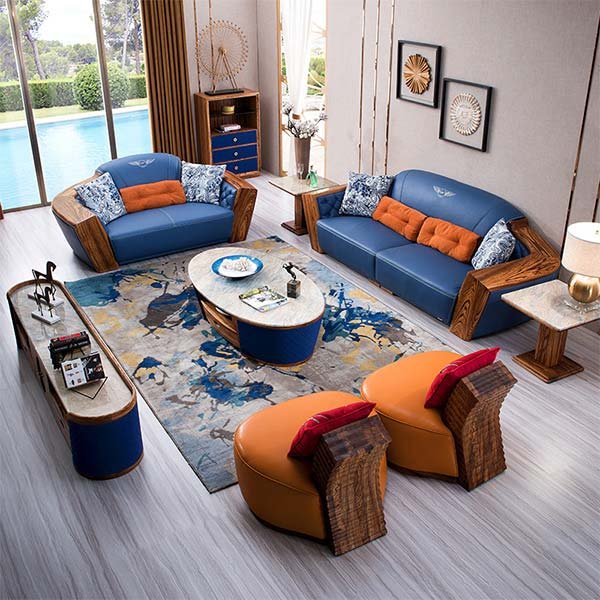“Experience the future of comfort with Sofa 2025 – inspired by global design trends.”
Sustainable Materials and Eco-Friendly Practices in Sofa Design
Sofa design has come a long way in recent years, with a growing emphasis on sustainability and eco-friendly practices. As we look towards the future of sofa design in 2025, it is clear that the use of sustainable materials and environmentally conscious practices will play a key role in shaping the industry.
One of the major trends in sofa design is the use of sustainable materials. This includes materials such as reclaimed wood, bamboo, and recycled fabrics. These materials not only reduce the environmental impact of sofa production but also add a unique and stylish touch to the final product. By using materials that are sourced responsibly and have a minimal impact on the environment, designers can create sofas that are not only beautiful but also environmentally friendly.
In addition to using sustainable materials, many designers are also incorporating eco-friendly practices into their production processes. This includes using energy-efficient manufacturing techniques, reducing waste, and minimizing the use of harmful chemicals. By adopting these practices, designers can create sofas that are not only better for the environment but also safer for consumers.
One of the key inspirations for sustainable sofa design comes from global markets. Countries such as Sweden, Denmark, and the Netherlands have long been leaders in sustainable design, with a focus on using natural materials and reducing waste. By looking to these countries for inspiration, designers can learn valuable lessons about how to create beautiful and sustainable sofas that are both stylish and environmentally friendly.
For example, Swedish design is known for its clean lines, minimalist aesthetic, and use of natural materials such as wood and leather. By incorporating these elements into their designs, designers can create sofas that are both stylish and sustainable. Danish design, on the other hand, is known for its focus on functionality and comfort, with an emphasis on creating furniture that is built to last. By taking inspiration from Danish design principles, designers can create sofas that are not only beautiful but also durable and long-lasting.
In the Netherlands, designers are known for their innovative use of recycled materials and sustainable production practices. By looking to Dutch designers for inspiration, designers can learn how to incorporate recycled materials into their designs in a way that is both stylish and environmentally friendly. By drawing on these global influences, designers can create sofas that are not only beautiful and functional but also sustainable and eco-friendly.
As we look towards the future of sofa design in 2025, it is clear that sustainability and eco-friendly practices will continue to play a key role in shaping the industry. By using sustainable materials, adopting eco-friendly practices, and drawing inspiration from global markets, designers can create sofas that are not only beautiful and stylish but also environmentally friendly. By embracing these principles, designers can help to create a more sustainable future for the furniture industry as a whole.
Cultural Influences on Sofa Designs from Around the World
Sofas are an essential piece of furniture in any living space, providing comfort and style to a room. The design of a sofa can be influenced by a variety of factors, including cultural influences from around the world. In this article, we will explore how different cultures have inspired sofa designs and how these influences can be seen in the latest trends for 2025.
One of the most prominent cultural influences on sofa design comes from the Scandinavian countries. Scandinavian design is known for its minimalist and functional approach, focusing on clean lines and natural materials. This aesthetic has been a major influence on modern sofa designs, with many designers incorporating elements of Scandinavian style into their creations. The use of light woods, neutral colors, and simple shapes are all hallmarks of Scandinavian design that can be seen in sofas from around the world.
Another cultural influence on sofa design comes from Japan. Japanese design is characterized by its simplicity, elegance, and attention to detail. This aesthetic has inspired many designers to create sofas that are sleek and understated, with a focus on craftsmanship and quality. Japanese-inspired sofas often feature low profiles, clean lines, and a sense of serenity that can bring a sense of calm to any living space.
In contrast to the minimalism of Scandinavian and Japanese design, the vibrant colors and patterns of African textiles have also made their mark on sofa design. African-inspired sofas often feature bold prints, rich textures, and intricate detailing that can add a pop of color and personality to a room. These designs can be seen in everything from throw pillows to upholstery fabrics, bringing a sense of warmth and energy to a space.
Moving to the Middle East, the intricate patterns and luxurious fabrics of Persian rugs have also influenced sofa design. Persian-inspired sofas often feature ornate detailing, rich colors, and plush upholstery that create a sense of opulence and luxury. These designs can add a touch of elegance to any room, evoking a sense of history and tradition that can be both timeless and modern.
In South America, the vibrant colors and textures of traditional textiles have inspired many designers to create sofas that are bold and expressive. South American-inspired sofas often feature bright hues, intricate patterns, and playful shapes that can bring a sense of joy and energy to a space. These designs can add a sense of warmth and personality to a room, creating a welcoming and inviting atmosphere for all who enter.
As we look ahead to 2025, it is clear that cultural influences from around the world will continue to shape sofa design. Whether it is the minimalist aesthetic of Scandinavia, the elegance of Japan, the vibrancy of Africa, the opulence of the Middle East, or the boldness of South America, these cultural influences will continue to inspire designers to create sofas that are both beautiful and functional. By embracing these diverse influences, we can create living spaces that are truly unique and reflective of the rich tapestry of global design.
Innovative Technology Integration in Sofa Design for 2025
As we look towards the future of sofa design in 2025, it is clear that innovative technology integration will play a significant role in shaping the way we interact with and experience our furniture. With advancements in materials, manufacturing processes, and digital technologies, designers are pushing the boundaries of what is possible in sofa design.
One of the key trends that we are seeing in sofa design for 2025 is the integration of smart technology. This includes features such as built-in speakers, wireless charging capabilities, and even voice-activated controls. These features not only enhance the functionality of the sofa but also provide a more seamless and intuitive user experience.
In addition to smart technology, designers are also looking to global markets for inspiration in terms of materials and aesthetics. For example, Japanese design principles such as minimalism and functionality are influencing the clean lines and simple forms of modern sofa designs. Scandinavian design, known for its emphasis on natural materials and craftsmanship, is also making its mark on the industry.
Another key trend in sofa design for 2025 is sustainability. With growing concerns about the environmental impact of furniture production, designers are turning to eco-friendly materials and manufacturing processes. This includes using recycled materials, reducing waste during production, and designing sofas that are easily recyclable at the end of their life cycle.
In terms of materials, we are seeing a shift towards more sustainable options such as bamboo, cork, and recycled plastics. These materials not only have a lower environmental impact but also offer unique textures and finishes that add interest to the design of the sofa.
Innovations in manufacturing processes are also driving changes in sofa design for 2025. 3D printing, for example, is revolutionizing the way that furniture is made, allowing for more complex and customizable designs. This technology is enabling designers to create sofas that are not only visually striking but also tailored to the specific needs and preferences of the user.
Digital technologies are also playing a role in the way that sofas are designed and manufactured. Virtual reality and augmented reality tools are being used to visualize and prototype designs, allowing designers to experiment with different shapes, materials, and configurations before committing to a final product. This not only speeds up the design process but also ensures that the end result meets the needs and expectations of the consumer.
In conclusion, the future of sofa design in 2025 is shaping up to be an exciting blend of innovative technology, sustainable materials, and global influences. By incorporating smart technology, sustainable practices, and cutting-edge manufacturing processes, designers are creating sofas that are not only functional and stylish but also environmentally friendly and tailored to the needs of the modern consumer. With inspiration from global markets and a focus on pushing the boundaries of what is possible, the sofas of 2025 are sure to be a reflection of the ever-evolving world of design.
Conclusion
The global market trends for sofa designs in 2025 show a focus on sustainability, versatility, and comfort. Consumers are looking for furniture that is not only stylish but also eco-friendly and functional. This has led to the incorporation of innovative materials, modular designs, and ergonomic features in sofa designs. Overall, the future of sofa design in 2025 is likely to be influenced by a combination of global market trends and consumer preferences, resulting in sofas that are both aesthetically pleasing and practical.



